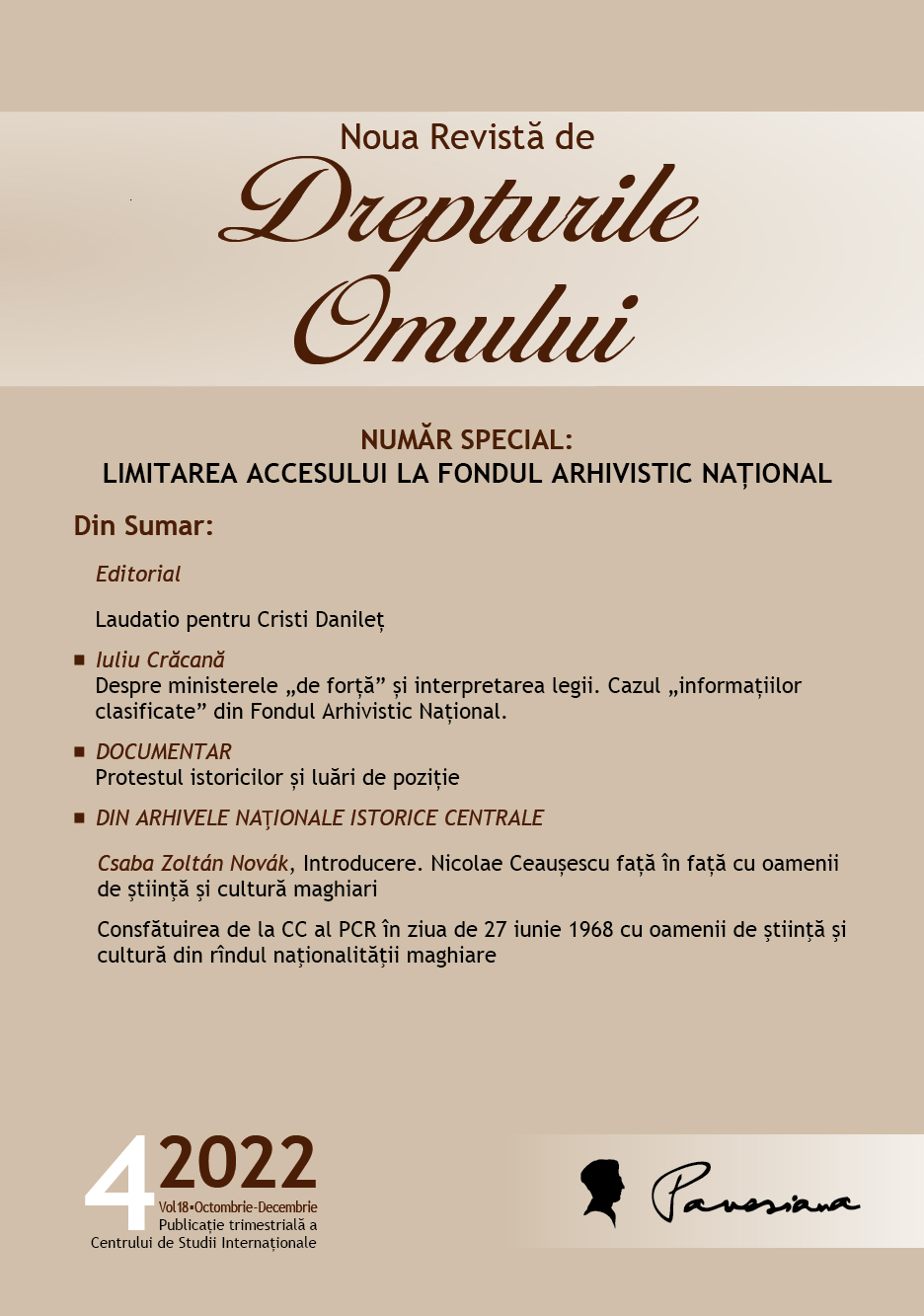Introducere. Nicolae Ceaușescu față în față cu oamenii de
știință și cultură maghiari (27 iunie 1968)
Introduction. Nicolae Ceauşescu face to face with Hungarian
scientists and cultural figures (June 27, 1968)
Author(s): Csaba Zoltán NovákSubject(s): Cultural history, Civil Society, Post-War period (1950 - 1989), History of Communism
Published by: Centrul de Studii Internationale
Keywords: 1968 conference; Hungarian intellectuals; Hungarian cultural centers; CC al PCR; Nicolae Ceaușescu; Transylvania;
Summary/Abstract: One action to regain the trust of the Hungarians was the organization of a meeting between the party leadership, at the highest level, and Hungarian intellectuals. At the initiative of the leaders of the Communist Party, on June 28, 1968, the most influential Hungarian cultural leaders (over 50 writers, poets, editors, artists, teachers) were invited to Bucharest to participate in an event organized according to the already established pattern of the previous meetings. Although the organization of such a meeting was a theoretical possibility quite likely at the time, the invited intellectuals were nevertheless taken by surprise, especially since they had received the announcement only a few days before. This situation did not leave much room for the elaborate tactics or common platforms (maybe only short discussions between certain people), but the participants knew all too well the most stringent problems of the Hungarians in Romania, as their interventions at the meeting in question would prove. The meeting organized at the headquarters of the Central Committee of the Communist Party included some important figures in the party (Nicolae Ceaușescu, Paul Niculescu Mizil, Leonte Răutu, Mihály Gere, János Fazekas) and representatives of the Hungarian intellectual elite from Bucharest (Géza Domokos, János Szász, Pál Bodor) and from the more important cultural centers in Transylvania: Cluj-Napoca (Ernő Gáll, János Demeter, Lajos Jordáky, Lajos Kántor, István Nagy, Gyula Csehi, Sándor Fodor, Sándor Kányádi, Elemér Jancsó), Târgu Mureș (Győző Hajdu, Zsolt Gálfalvi, András Sütő), Timișoara (Ernő Sisak) etc. Twenty-six people spoke. 81Theoretically, all the guests had the right to speak, and the time allocated to an intervention was not defined. There was only a call for summarizing and shortening the intervention, as much as possible, as the time passed. There were no prior agreements, but the discussions clearly show the problems that needed to be solved urgently, in the Hungarians’ view.
Journal: Noua Revistă de Drepturile Omului
- Issue Year: 18/2022
- Issue No: 4
- Page Range: 41-45
- Page Count: 5
- Language: Romanian

